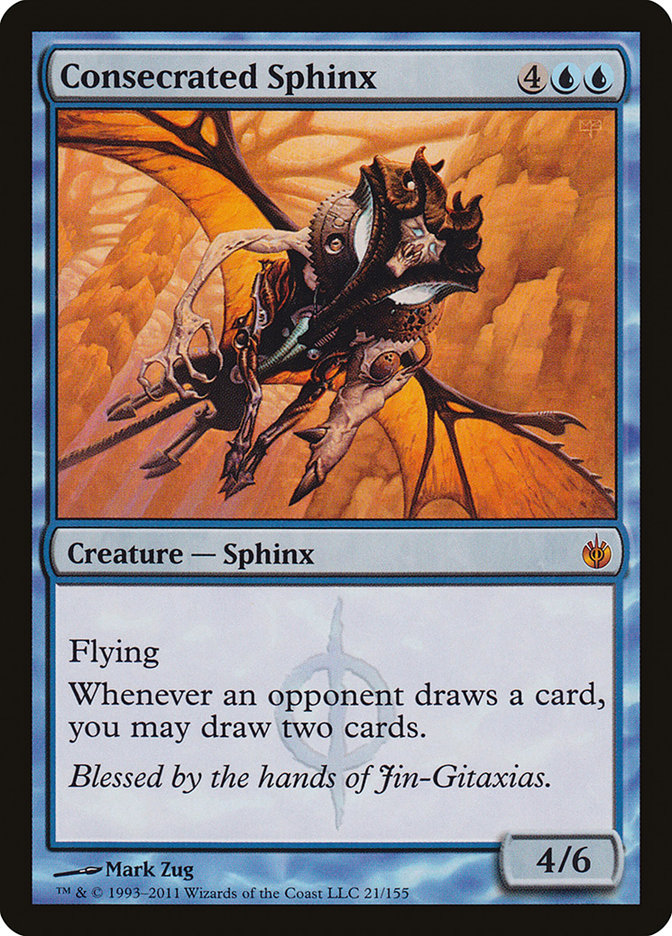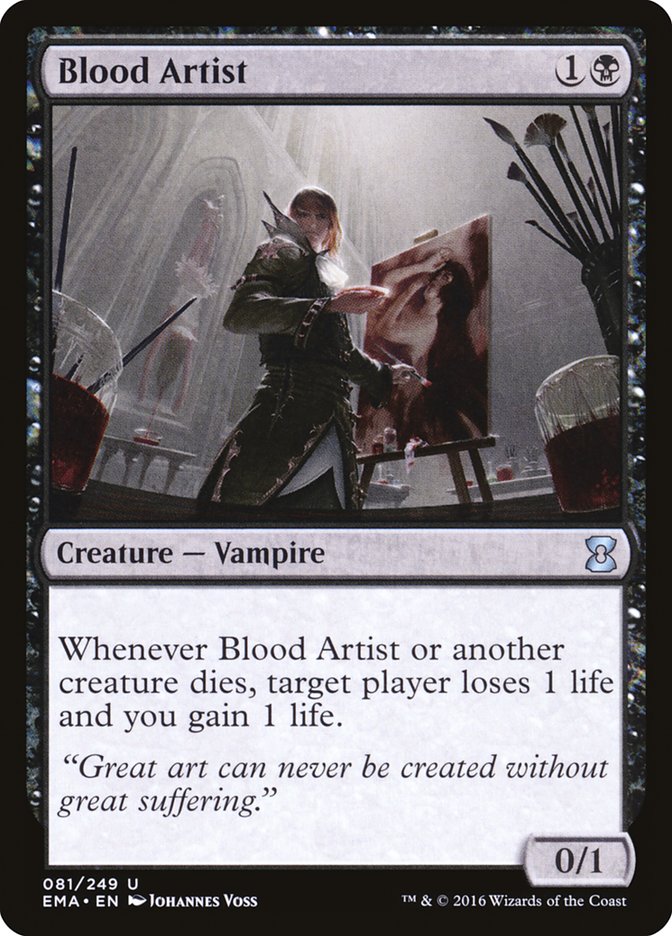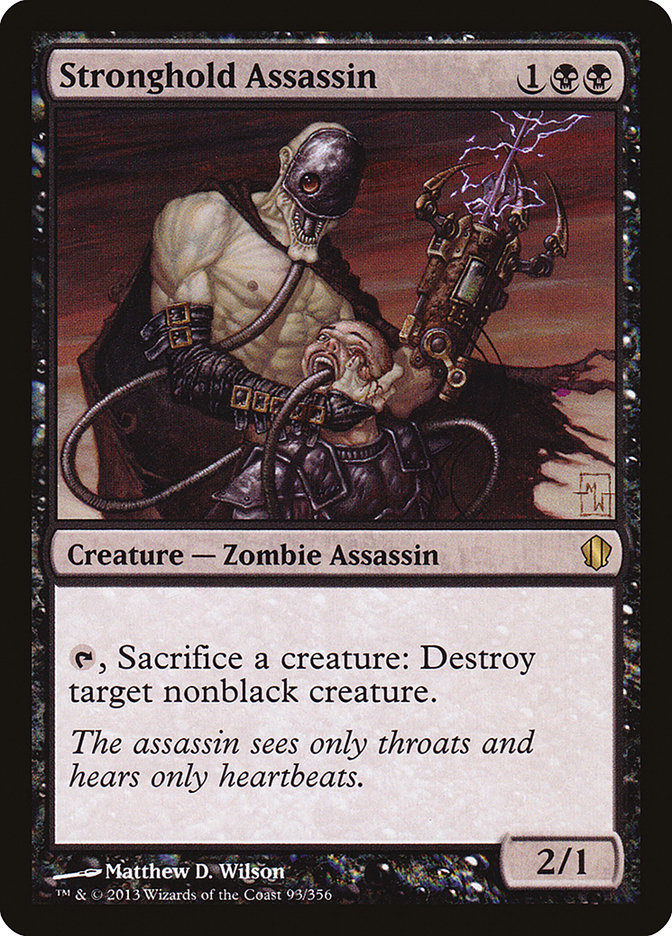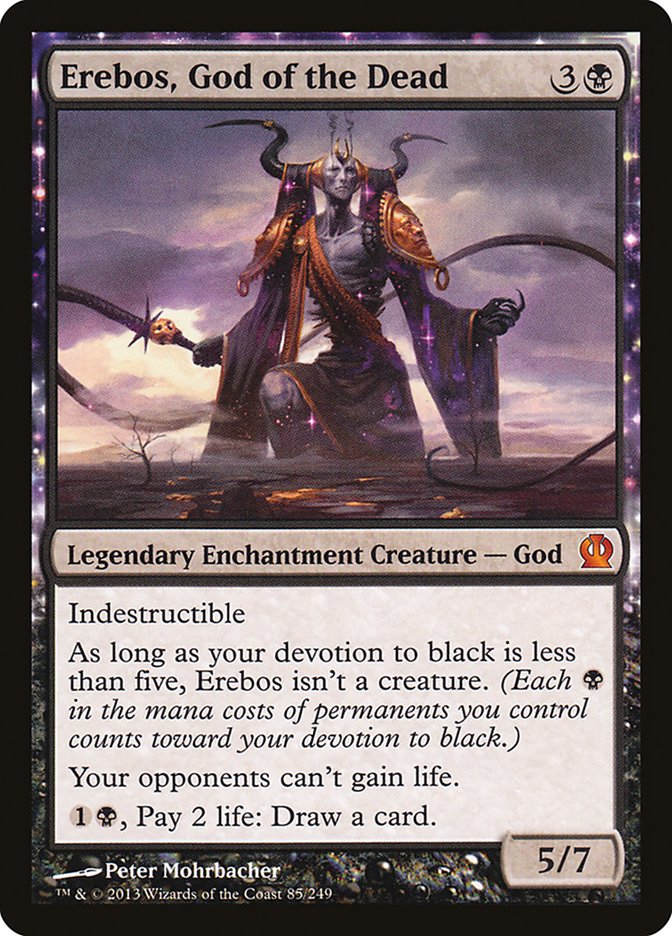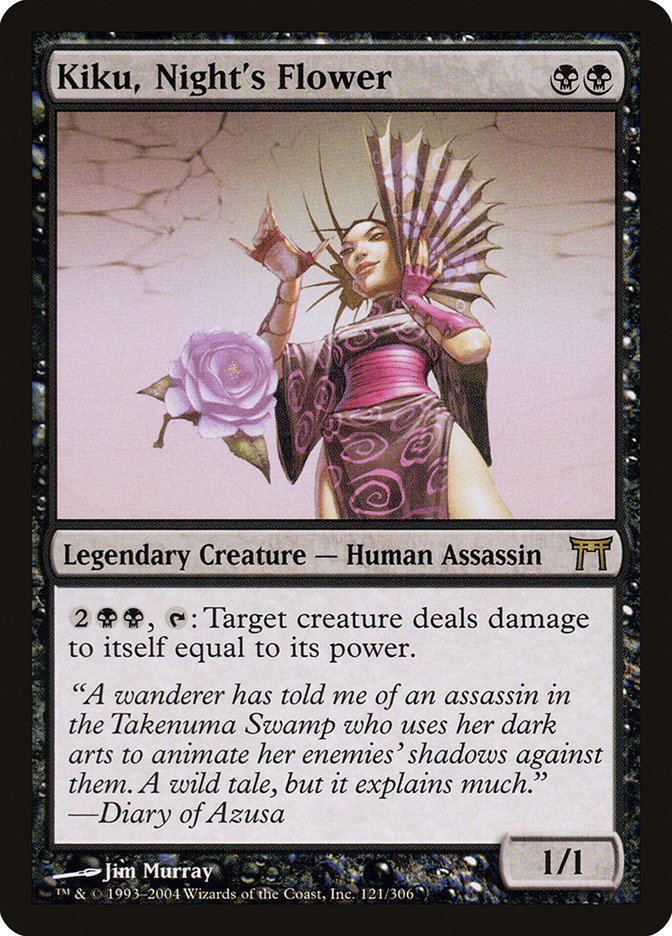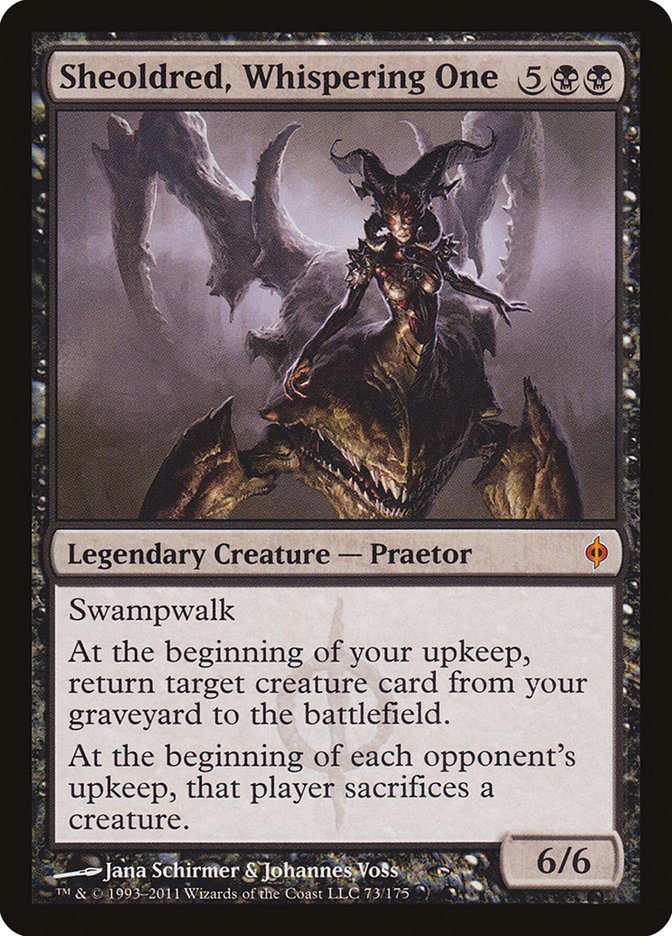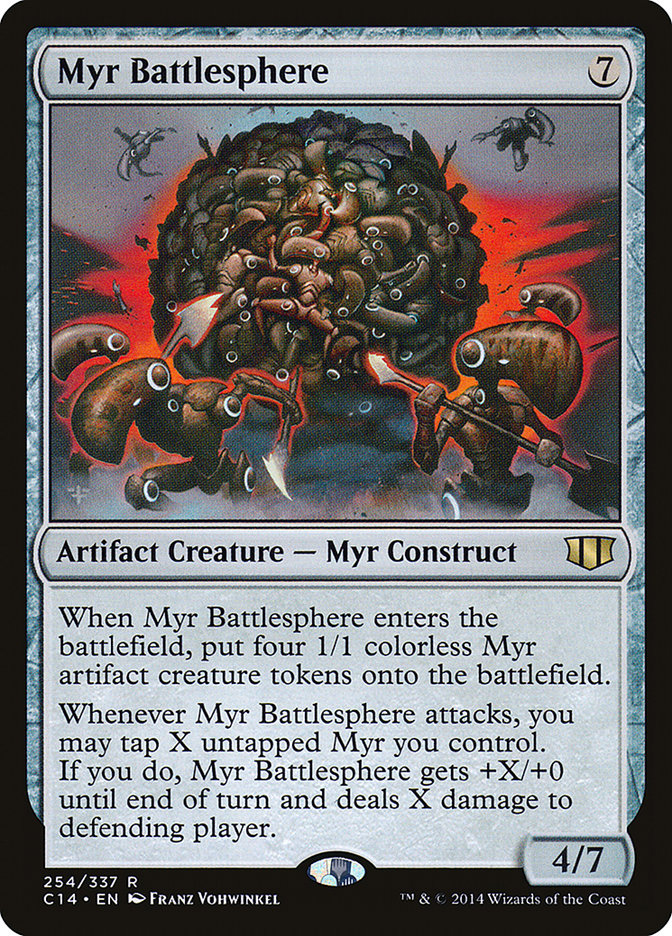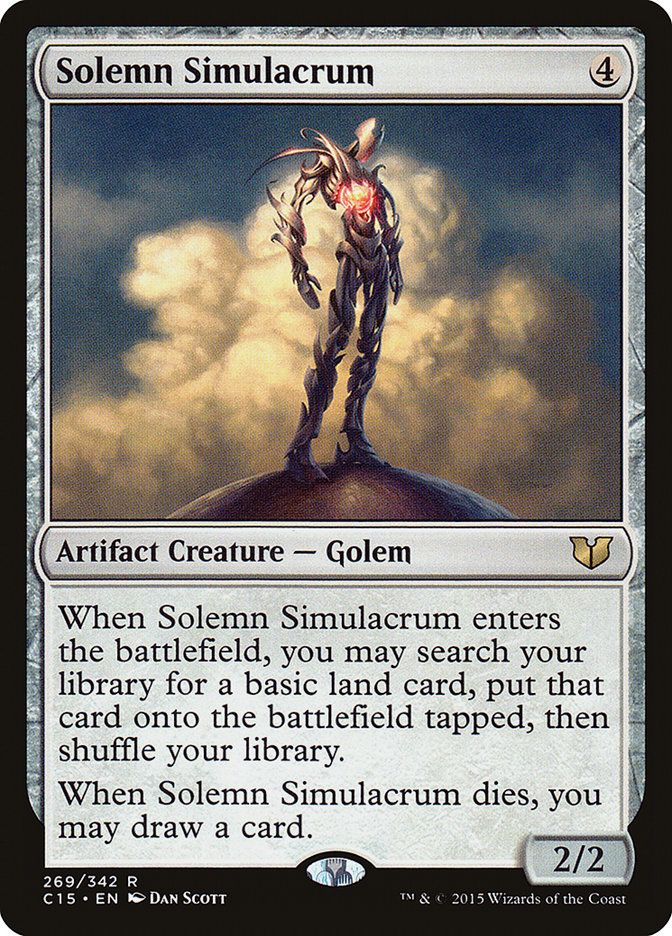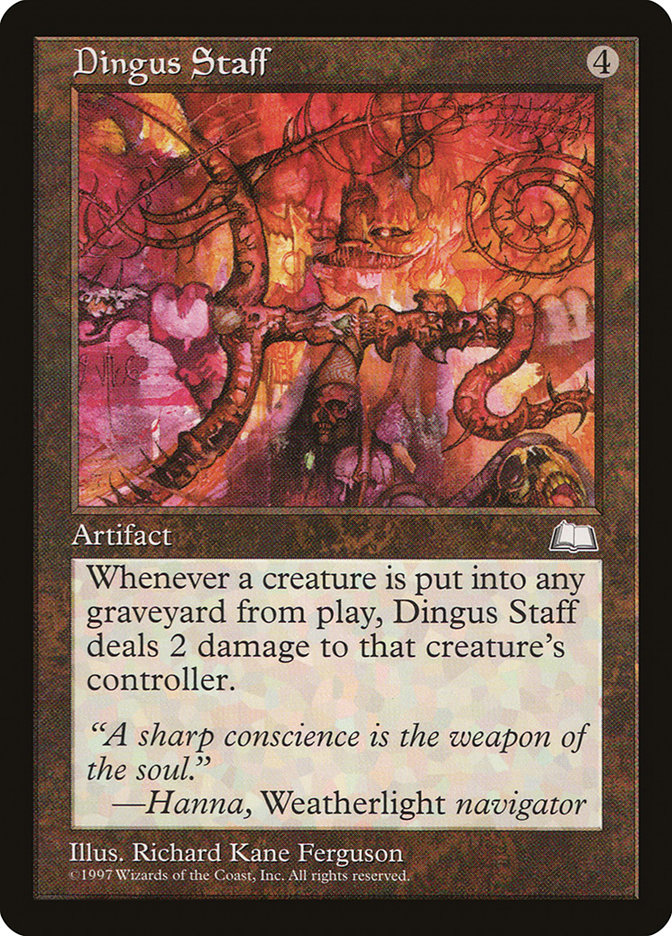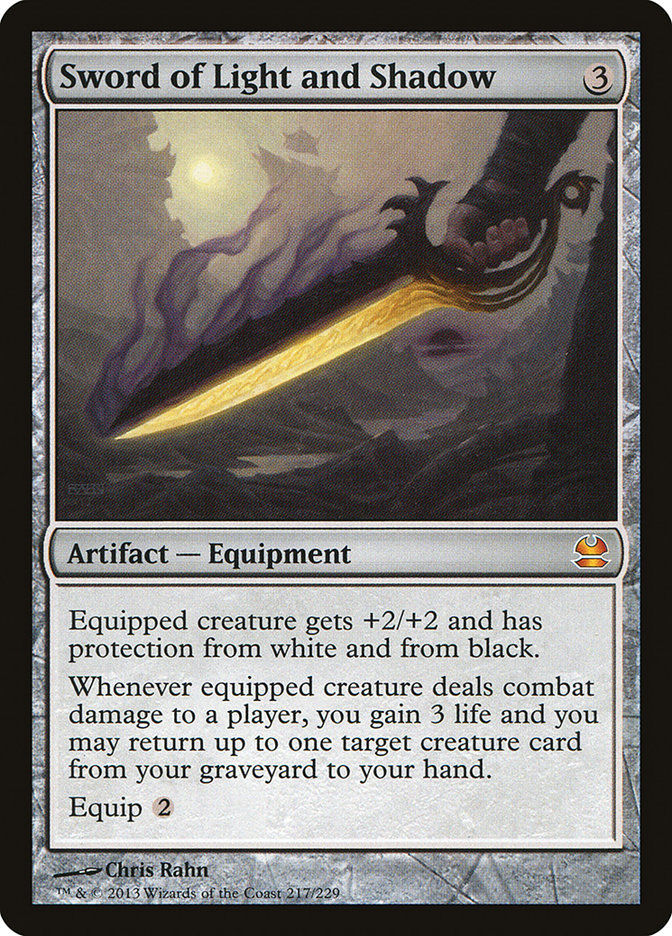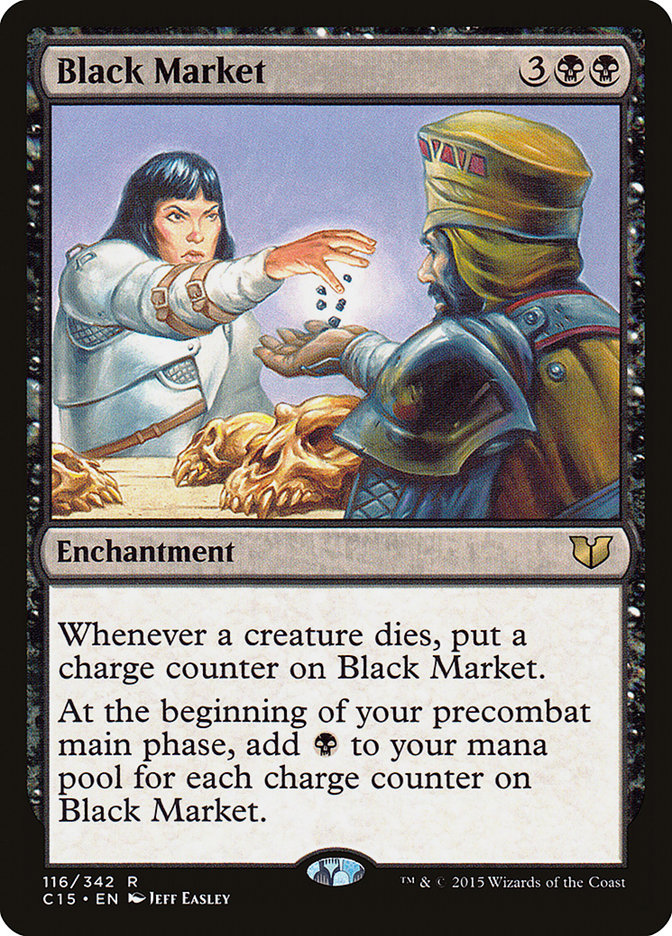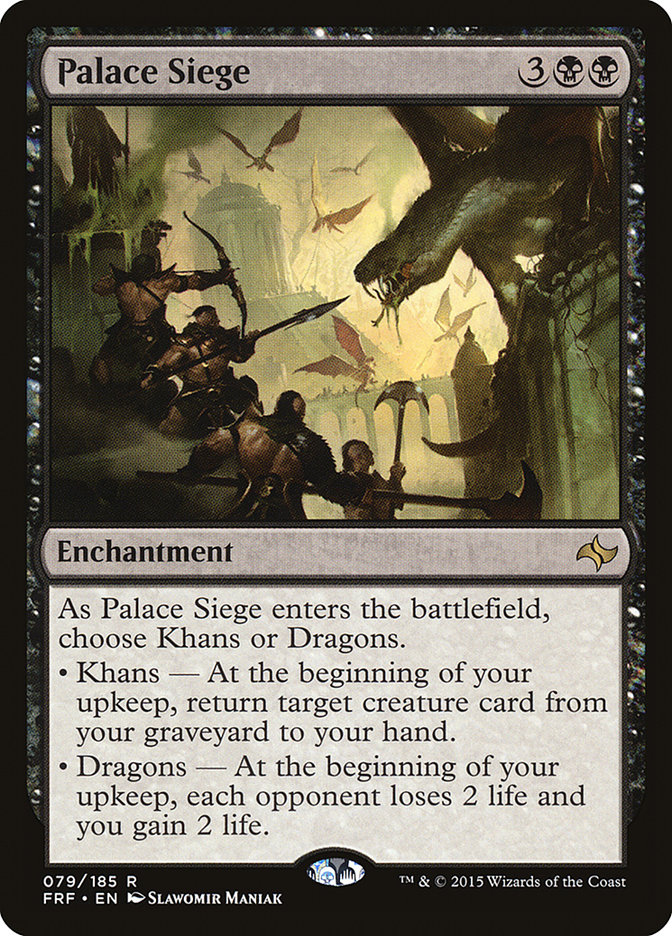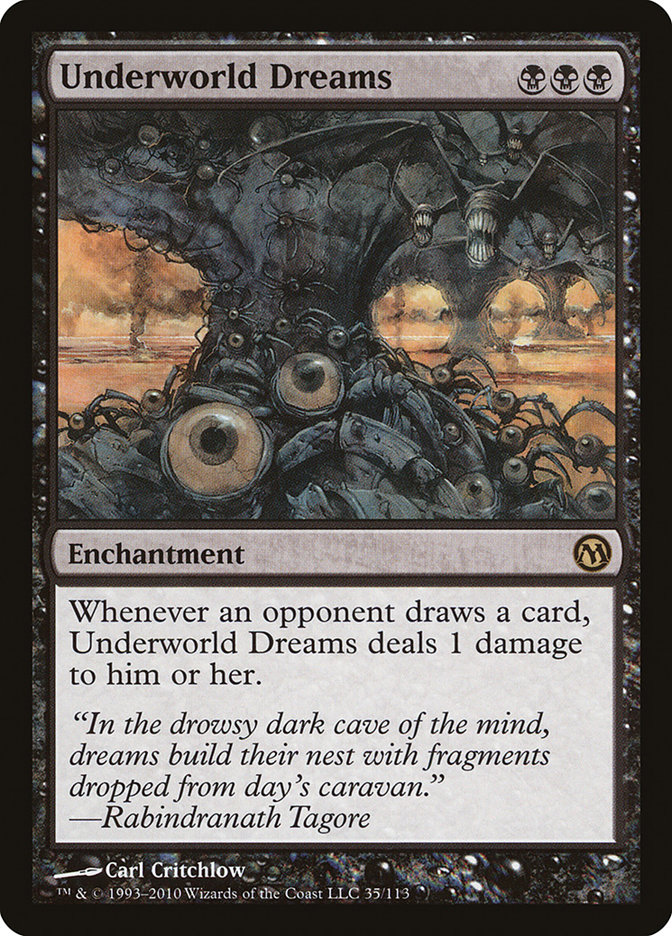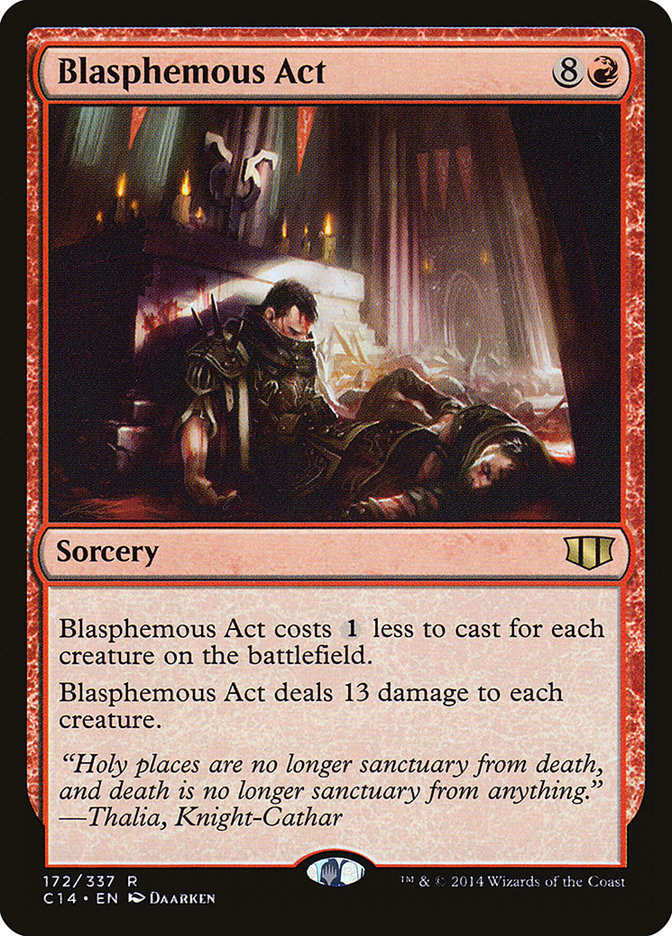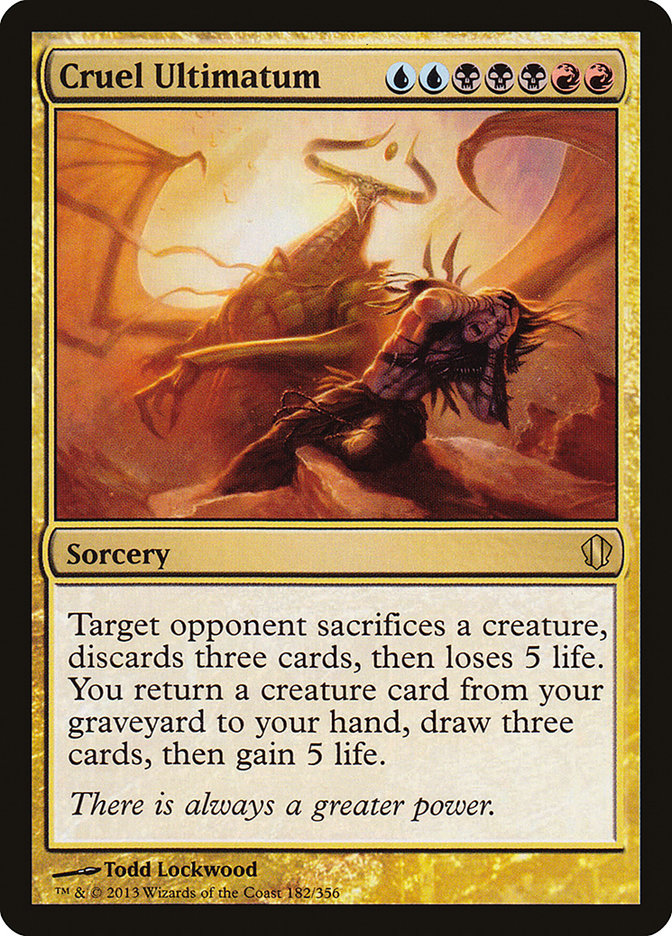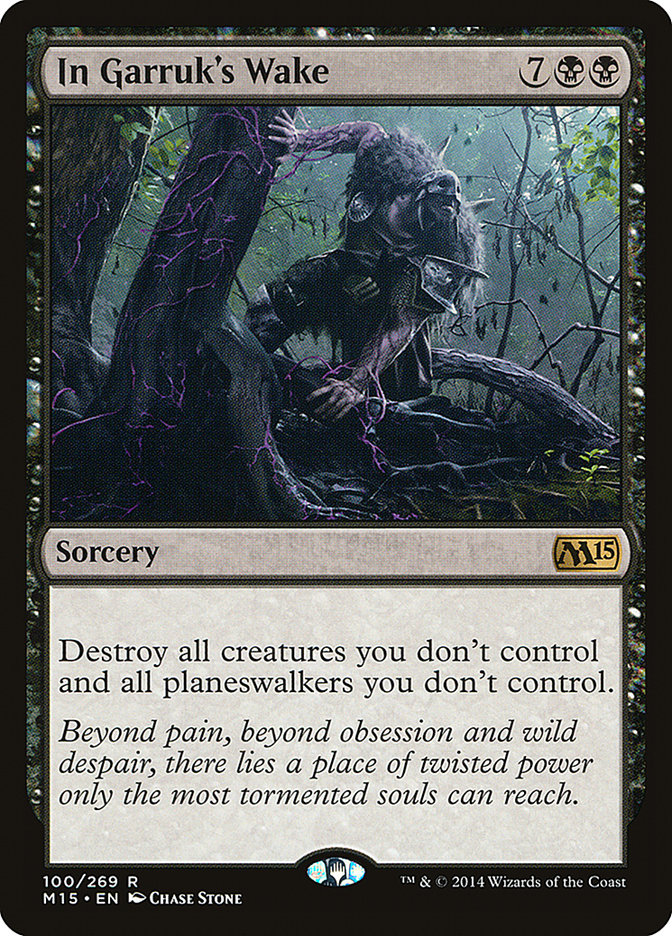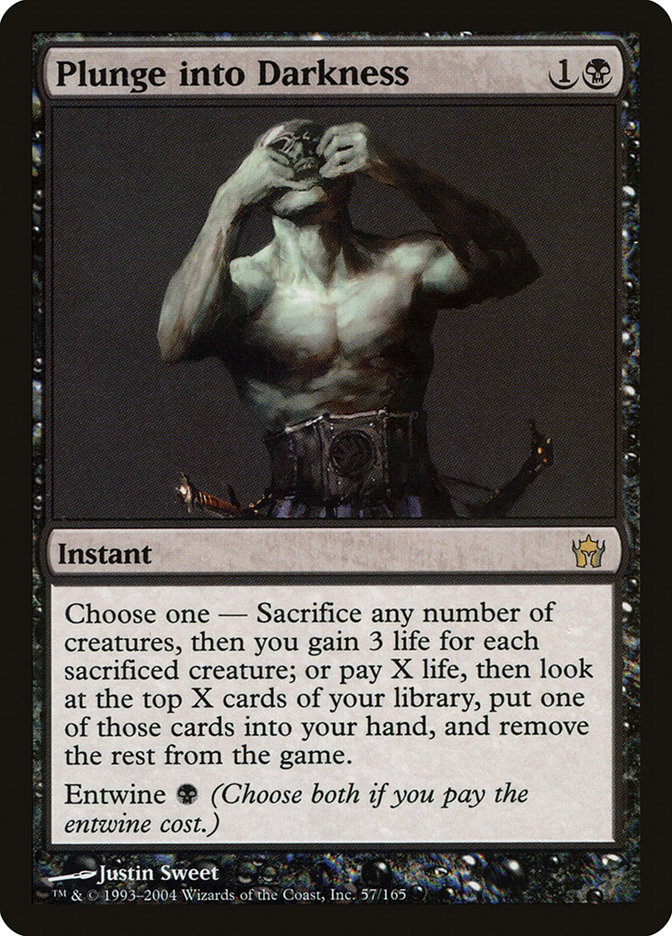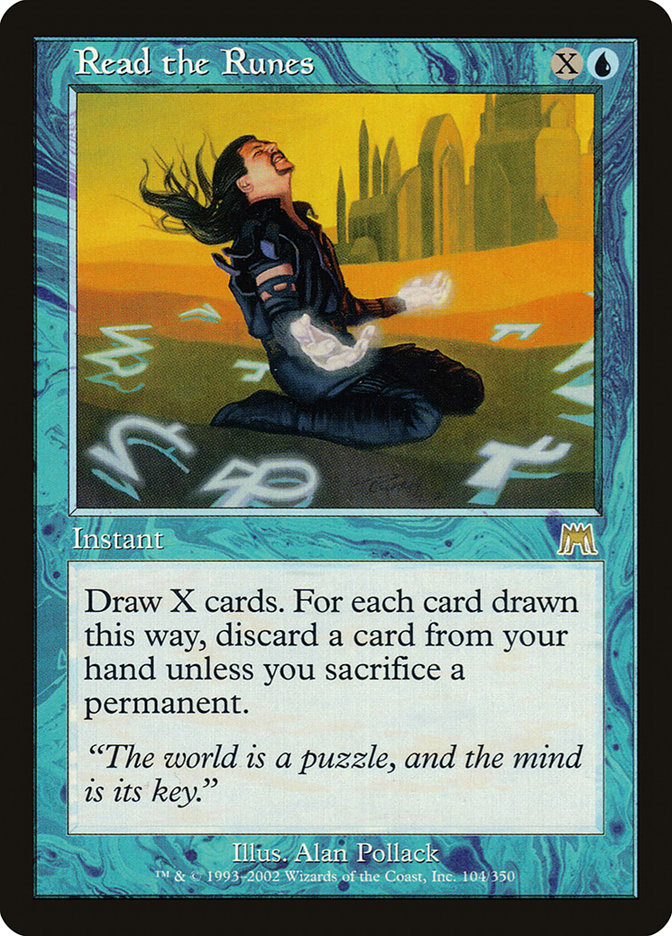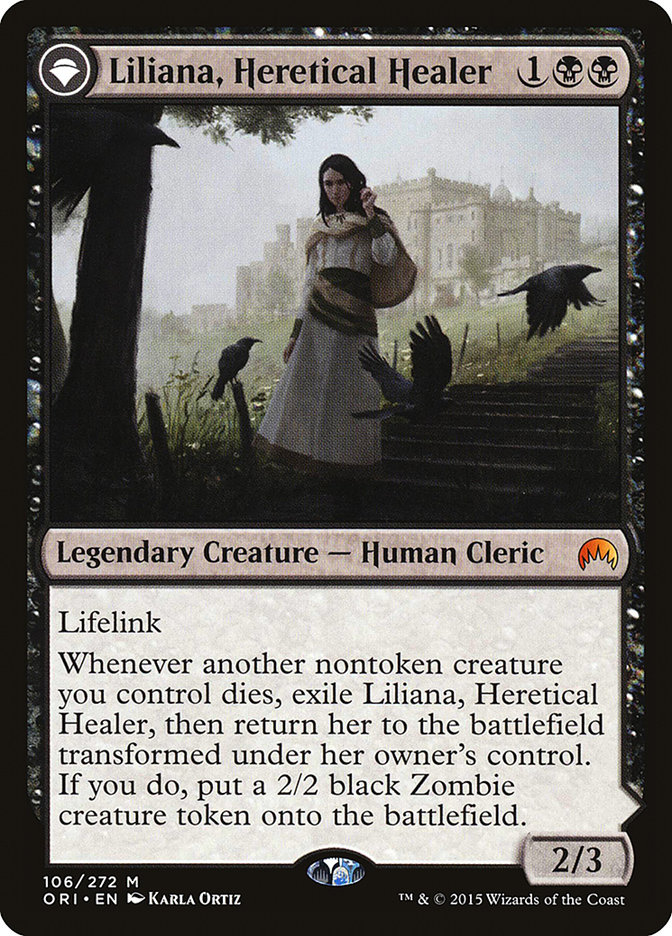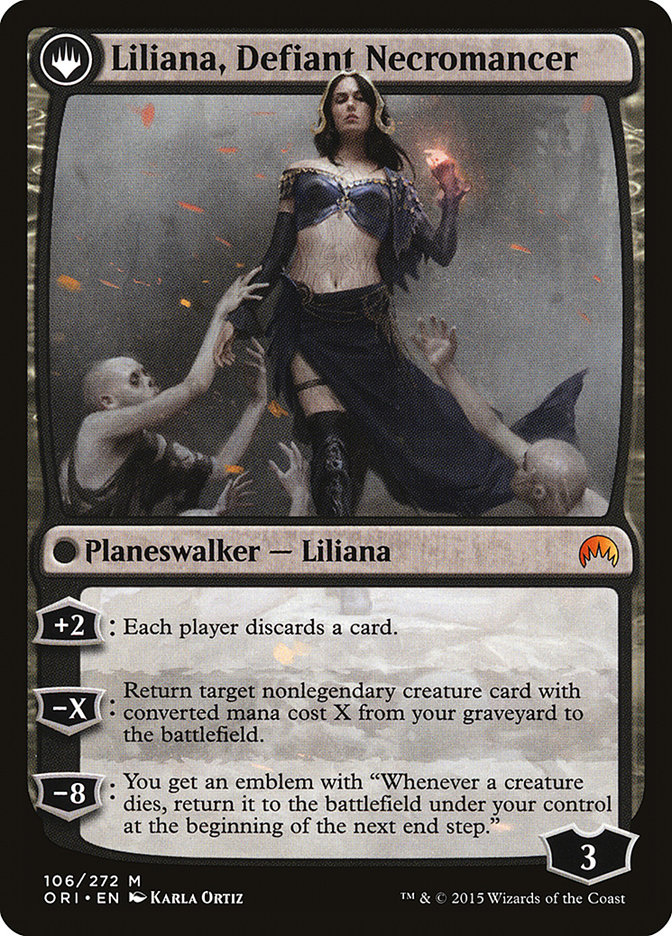The Do Over Project train rolls into its next station with a new deck for our long-time friend, Lord of Tresserhorn. Lord of Tresserhorn is arguably the deck that opened peoples’ eyes to the format back in 2004 with a little contest on these very pages. Fellow Commander Rules Committee member Scott Larabee picked up the deck and had a blast playing it, which is a main part of how the format was evangelized at the Wizards of the Coast offices. Looking back at that article, my favorite quote has to be “Hopefully Elder Dragon Highlander will catch on in your neighborhood.” Seems like it did.
Even before splitting the Zombies, I knew that Lord of Tresserhorn would be my next Do Over deck. Let’s first look at the list, and then I’ll tell you how I arrived at these 99:
Creatures (29)
- 1 Solemn Simulacrum
- 1 Royal Assassin
- 1 Kiku, Night's Flower
- 1 Goblin Sharpshooter
- 1 Bone Shredder
- 1 Dross Harvester
- 1 Stronghold Assassin
- 1 Stalking Assassin
- 1 Lyzolda, the Blood Witch
- 1 Endrek Sahr, Master Breeder
- 1 Big Game Hunter
- 1 Cemetery Puca
- 1 Murderous Redcap
- 1 Emrakul's Hatcher
- 1 Pawn of Ulamog
- 1 Rapacious One
- 1 Myr Battlesphere
- 1 Consecrated Sphinx
- 1 Sheoldred, Whispering One
- 1 Falkenrath Noble
- 1 Rage Thrower
- 1 Blood Artist
- 1 Dark Impostor
- 1 Sepulchral Primordial
- 1 Purphoros, God of the Forge
- 1 Erebos, God of the Dead
- 1 Fate Unraveler
- 1 Liliana, Heretical Healer
- 1 Sifter of Skulls
Lands (37)
Spells (33)
- 1 Journeyer's Kite
- 1 Fellwar Stone
- 1 Dingus Staff
- 1 Underworld Dreams
- 1 Grave Pact
- 1 Plague Wind
- 1 Read the Runes
- 1 Plunge into Darkness
- 1 Ashnod's Altar
- 1 Sword of Light and Shadow
- 1 Sword of Fire and Ice
- 1 Wayfarer's Bauble
- 1 Altar of Shadows
- 1 Black Market
- 1 Attrition
- 1 Cultural Exchange
- 1 Dawn of the Dead
- 1 Goblin Assault
- 1 Vicious Shadows
- 1 Cruel Ultimatum
- 1 Carnage Altar
- 1 Eldrazi Monument
- 1 Chain Reaction
- 1 Sword of War and Peace
- 1 Blasphemous Act
- 1 Trading Post
- 1 Dictate of Erebos
- 1 In Garruk's Wake
- 1 Necromantic Selection
- 1 Palace Siege
- 1 Sword of the Animist
- 1 Vampiric Rites
- 1 Deadly Tempest

There are three basic elements to the deck. First is the Assassin tribal aspect. There are 44 Assassins in Magic, not all of them great. I picked out the best so that they could support the second element, which is making it hurt when creatures die. This manifests itself in both making more creatures die (Dictate of Erebos and Grave Pact) and just doming people (Dingus Staff, Blood Artist, Falkenrath Noble).
The third element is to leverage the abilities of the commander. Losing two life isn’t that big of a deal, and we’ve already covered sacrificing creatures, so we’ll also want to look at opponents drawing cards. Normally this will be the player who is behind or is willing to be a short-term ally. Also, there are things there to hurt people for drawing cards, such as Underworld Dreams and Fate Unraveler. Consecrated Sphinx is just good on its own, but with the extra card draw for opponents, even better. I didn’t want to go full Nekusar, the Mindrazer on people, but a little extra pain for drawing lots of cards can’t hurt (me).
The other half of using Lord of Tresserhorn is his ten power. I haven’t gone full Voltron here, but a few pieces of equipment can make him deadly in two shots. He doesn’t have any evasion abilities, so the Assassin piece also helps get potential blockers out of the way. I used battlefield wipes from which he’s allowed to regenerate in order to keep alive the commander damage threat.
I stayed true to the Do Over Project vision of not repeating any cards from the original Lord of Tresserhorn deck. I wanted to completely divorce this deck from all those Zombies, so I tacked on the additional restriction of not putting in any nonland cards from the new Gisa and Geralf deck. Let’s look at the individual card choices:
Creatures (20)
Big Game Hunter: One of my all-time favorite cards (probably because of its interaction with Survival of the Fittest), the Notorious BGH is a straight-up killer of things which will hurt you.
Blood Artist: In addition to dealing out some damage (actually life loss), Blood Artist helps mitigate the loss of life from Lord of Tresserhorn.
Bone Shredder: Another of my favorites, Bone Shredder’s echo insures that it’ll be in the graveyard when I want to have some reanimation tricks, which you’ll see the deck has a few of.
Cemetery Puca: An underplayed card in the format, Cemetery Puca combines with many of the creature-killers to make a large monster for very little mana.
Consecrated Sphinx: Players better than I am tell me that drawing cards is good.
Dark Impostor: It’s a little spendy to activate, but it exiles the creature. Sure, it doesn’t combo with Cemetery Puca, but I’ll take the trade-off to get rid of something frightening and reusable.
Dross Harvester: One of this week’s hidden gems and a card I’ve used to some success in the past, Dross Harvester rarely fails to give me more life than it takes. If someone wants to waste targeted removal on it before I’ve gained any life, it’s not that big of a deal. Protection from white seems a little random, but I won’t complain.
Emrakul’s Hatcher: Another one of the things I want to do to take advantage of the deck’s commander is to make tokens for sacrificial purposes. The interaction between Eldrazi Spawn (or Eldrazi Scions) and Grave Pact is obvious.
Falkenrath Noble: Blood Artist on a slightly larger, flying body.
Fate Unraveler: If people aren’t getting silly with card draw, then this won’t hurt too badly. It’s like drinking responsibly.
Goblin Sharpshooter: I was going to try some machine gun nonsense with Summoning Station and Blasting Station, but decided that I’d be creating enough token creatures and sacrificing them for mana to not have to.
Murderous Redcap: This card really made me want to try to work Nim Deathmantle into the mix. In the end, I simply didn’t see any room for it.
Pawn of Ulamog: The best of the Eldrazi Scion creators, Pawn of Ulamog will more than pay for the low mana investment to cast it. It will also help me get restarted after a big battlefield wipe.
Rage Thrower: Some five years ago or so, one of the Armada Games regulars (I think it was either Apple or Jesse) showed us the wonder of Rage Thrower. It’s been tossing its anger around the shop ever since.
Rapacious One: Trample is part of what will help get damage through, as will the Assassin angle.
Sifter of Skulls: Effectively a second version of Pawn of Ulamog.
Royal Assassin: The original Assassin. I’m fond of the rattlesnake aspect—people will avoid attacking because they have to tap the creature. I wonder if there’s a way to give Royal Assassin the ability of Goblin Sharpshooter. I suppose having Necrotic Ooze on the battlefield and Royal Assassin and Goblin Sharpshooter in the graveyard would do the trick. There’s your janky combo for the day.
Sepulchral Primordial: Killing powerful creatures means they’ll be around to be resurrected. When you absolutely, positively have to reanimate the best creature from all opponents, accept no substitutes.
Stalking Assassin: Stalking Assassin can help out Royal Assassin in his mission to de-civilize. This got me thinking along the lines of a “tap stuff” subtheme, which I quickly abandoned so as to not water down the existing elements.
Stronghold Assassin: Pretty straightforward stuff. Stronghold Assassin is Attrition on a stick.
Legendary Creatures (6)
Endrek Sahr, Master Breeder: The deck’s sacrifice outlets will keep the Thrull population in check, while the triggered ability will keep fueling the sacrifice outlets. Everyone (and by everyone, I mean me) wins.
Erebos, God of the Dead: Because I’m trying to kill people with Commander damage for the most part, denying lifegain is only secondary to having a constantly-available source of card draw.
Kiku, Night’s Flower: Kiku conjures ideas of playing Repercussion, but that’s a theme which has been done over a little much (at least locally). If you want to build a deck something like this, however, you might consider it replacement for one of the other enchantments.
Lyzolda, the Blood Witch: Sure, Eldrazi Scion and Spawn aren’t useful with Lyzolda, but those Thrull tokens from Endrek Sahr sure are. The fact that Lyzolda doesn’t require tapping is a huge bonus.
Purphoros, God of the Forge: The deck doesn’t go crazy making creatures, but it makes enough to get decent mileage out of Purphoros.
Sheoldred, Whispering One: The Praetors seem to have lost some favor, or maybe people have just gotten tired of playing them. Sheoldred is a strong fit with how the deck operates.
Artifact Creatures (2)
Myr Battlesphere: Another card which set me down a line of thought which was eventually discarded—namely, making all the creature generators Myr. Not a terrible idea, just not the direction I wanted to go (although it makes the Blasting Station line more palatable).
Solemn Simulacrum: Remembering that Solemn Simulacrum was in neither Zombie deck was a little slice of heaven.
Artifacts (13)
Altar of Shadows: Combo with Black Market for fun and creature-killing profit.
Ashnod’s Altar: I considered Phyrexian Altar but went for the more budget-friendly card. There are enough ways to make mana of the color(s) the deck needs, so I’ll take the additional mana instead.
Carnage Altar: Similar to Lyzolda in that it doesn’t tap to activate, Carnage Altar can be one of those end-step setup pieces which lead into an explosive next turn.
Dingus Staff: If you want creatures dying to hurt, then Dingus Staff is your thing. It’s going to hurt me as well, but I’m reasonably sure I have enough lifegain to mitigate it.
Eldrazi Monument: Occasionally I’ll need an alternate path to victory. A bunch of flying Eldrazi Spawn might just do the trick. Plus, it keeps my creatures alive when I use one of the battlefield wipes.
Fellwar Stone: Grixis needs mana rock help. This particular deck, which is heavily black, might occasionally need help generating blue and red mana, and someone else is always playing at least one of those colors.
Journeyer’s Kite: A little slow, but I think the deck can afford it.
Sword of Fire and Ice: The swords are all part of the Voltron package for Lord of Tresserhorn, plus they do something else. Sword of Fire and Ice draws cards.
Sword of Light and Shadow: Because most of the utility creatures are inexpensive to cast, bringing them back from the graveyard will frequently lead to casting them post-combat.
Sword of the Animist: Again, Grixis needs the help in getting additional lands. Equipped to Lord of Tresserhorn, the +1/+1 makes him lethal in two hits (there’s nothing worse than dealing twenty commander damage to someone).
Sword of War and Peace: Some punishment for drawing additional cards and a little lifegain.
Trading Post: The wonderfully flexible Trading Post is in this deck mostly to make Goats, but the other abilities will certainly come into play. Sacrificing a Thrull to get back one of the important artifacts is the most likely scenario.
Wayfarer’s Bauble: Rampant Growth for colors that don’t have access to Rampant Growth.
Enchantments (10)
Attrition: Is Attrition alone enough to warrant playing Thran Lens? Probably not, but it’s worth thinking about.
Black Market: One thing you can be sure of in Commander games: creatures will die. Black Market capitalizes on that fact to the extreme.
Dawn of the Dead: The life loss is insignificant. I’m not a fan of exiling my own creatures, which is why I love the card in decks with sacrifice outlets.
Dictate of Erebos: Sure, availing yourself of the flash option makes sense, but I can’t imagine too many scenarios in which it matters. Dictate of the Twin Gods has the blowout factor, while Dictate of Karametra and Dictate of Kruphix let you be the first to take advantage of them. I suppose an active Dictate of Erebos might prevent players from casting creatures because they know you can kill them, whereas flashing it in catches them unaware.
Goblin Assault: I’m not much worried about being forced to attack with Goblins. If they’re not getting sacrificed to do something else, they’d be battling anyway.
Grave Pact: Get. In. The. Grave. Eighth Edition art for the gold.
Palace Siege: I can’t imagine too many situations in which I’d choose Dragons, but you never know.
Underworld Dreams: Again, not going full Nekusar, but a few bits help.
Vampiric Rites: I know friend of the show Brian David-Marshall says that Cryptbreaker is the most fun he’s had with a one-mana black card, but Vampiric Rites might be the winner in that race.
Vicious Shadows: Creatures dying combined with people drawing additional cards will be very painful. I haven’t played Vicious Shadows in a long time, so we’ll see how it goes. It might be a little more oppressive than I want; if it is, it’ll get the axe.
Sorceries (8)
Blasphemous Act: As I mentioned earlier, I picked battlefield wipes from which Lord of Tresserhorn can regenerate. There aren’t too many other creatures surviving Blasphemous Act.
Chain Reaction: My obvious best-case scenario is playing Chain Reaction while I have Eldrazi Monument on the battlefield, but even if I don’t, sometimes battlefields must be wiped.
Cruel Ultimatum: I figure if you’re playing Grixis, you might as well play the card that is emblematic of the shard. Made me want to fit in Nicol Bolas, Planeswalker as well, but there was no room at the inn.
Cultural Exchange: The cool thing about Cultural Exchange is that it doesn’t target the creatures, only the players. You don’t choose the number and the creatures until Cultural Exchange resolves, so once you’ve selected what you’re exchanging, they can’t respond. Note that you don’t have to be part of the exchange, which would be lots better if it weren’t a sorcery. For me, the cool thing is that I get the creatures from Endrek Sahr before Cultural Exchange resolves, since it’s a cast trigger. You’d better believe I’m shipping those Thrulls for something better.
Deadly Tempest: Not sure yet if this is a non-bo with a creature-killing deck or not. We’ll see.
In Garruk’s Wake: Obviously, I won’t want to sacrifice creatures to generate the mana to play In Garruk’s Wake. It might also be worth casting on a creature-medium battlefield just to get rid of some powerful planeswalkers.
Necromantic Selection: Clearly the play here is to reanimate my own Sepulchral Primordial.
Plague Wind: In Garruk’s Wake #2. If I need to, I can just battle the planeswalkers.
Instants (2)
Plunge into Darkness: This slot was going to be Crypt Incursion, but chose Plunge into Darkness for two reasons. One, I play Crypt Incursion in a few other decks. Two, in case I don’t have other options, I want to have a sacrifice outlet available to get rid of some Thrulls. Because Plunge into Darkness is an instant, I can play it at end of turn before I’m going to do a board wipe anyway.
Read the Runes: A long-time favorite I’ve taken out of a few decks recently. I want to bring it back into action. This seems like the right deck to do it in.
Planeswalkers (1)
Liliana, Heretical Healer // Liliana, Defiant Necromancer: This one is all about getting the emblem. It’s not going to happen that often, but between the battlefield sweepers and the targeted creature kill, I have a reasonable chance of making it happen.
This Week’s Hidden Gem
While there are a few off-the-beaten path cards in the deck, this week I want to call your attention to a completely different card, Burning-Tree Shaman.
You’ll be surprised at how much damage it ends up dealing—or how frequently it keeps players from activating abilities.
This week’s Deck Without Comment is Children of a Greater God.
Creatures (37)
- 1 Darksteel Colossus
- 1 Solemn Simulacrum
- 1 Withered Wretch
- 1 Wood Elves
- 1 Eternal Witness
- 1 Yavimaya Elder
- 1 Crusading Knight
- 1 Coiling Oracle
- 1 Stuffy Doll
- 1 Seedguide Ash
- 1 Sapling of Colfenor
- 1 Terastodon
- 1 Ulamog, the Infinite Gyre
- 1 Sun Titan
- 1 Predator Ooze
- 1 Deathrite Shaman
- 1 Tajic, Blade of the Legion
- 1 Nylea, God of the Hunt
- 1 Thassa, God of the Sea
- 1 Heliod, God of the Sun
- 1 Purphoros, God of the Forge
- 1 Erebos, God of the Dead
- 1 Burnished Hart
- 1 Ephara, God of the Polis
- 1 Mogis, God of Slaughter
- 1 Karametra, God of Harvests
- 1 Xenagos, God of Revels
- 1 Phenax, God of Deception
- 1 Iroas, God of Victory
- 1 Keranos, God of Storms
- 1 Kruphix, God of Horizons
- 1 Athreos, God of Passage
- 1 Pharika, God of Affliction
- 1 Dack's Duplicate
- 1 Soul of New Phyrexia
- 1 Zurgo Helmsmasher
- 1 Dualcaster Mage
Planeswalkers (2)
Lands (21)
Spells (39)
- 7 Forest
- 3 Plains
- 3 Mountain
- 3 Island
- 1 Darksteel Ingot
- 1 Kodama's Reach
- 1 Akroma's Vengeance
- 1 Decree of Pain
- 1 Scrabbling Claws
- 1 Explosive Vegetation
- 1 Nature's Lore
- 1 Survival of the Fittest
- 1 Phyrexian Reclamation
- 1 Greater Good
- 1 Skyshroud Claim
- 1 Mirror Strike
- 1 Rout
- 1 Damnation
- 1 Harmonize
- 1 Prismatic Omen
- 1 Grim Discovery
- 1 Chain Reaction
- 1 Cultivate
- 1 Chaos Warp
- 1 Command Tower
- 1 Chromatic Lantern
- 1 Rise of the Dark Realms

Check out our comprehensive Deck List Database for lists of all my decks:
SIGNATURE DECKS
Purple Hippos and Maro Sorcerers; Kresh Into the Red Zone; Halloween with Karador; Dreaming of Intet; You Did This to Yourself;
THE CHROMATIC PROJECT
Mono-Color
Heliod, God of Enchantments; Thassa, God of Merfolk; Erebos and the Halls Of The Dead; Forge of Purphoros; Nylea of the Woodland Realm; Karn, Beatdown Golem
Guilds
Lavinia Blinks; Obzedat, Ghost Killer; Aurelia Goes to War; Trostani and Her Angels; Lazav, Shapeshifting Mastermind; Zegana and a Dice Bag; Rakdos Reimagined; Glissa, Glissa; Ruric Thar and His Beastly Fight Club
Shards and Wedges
Adun’s Toolbox; Animar’s Swarm; Karrthus, Who Rains Fire From The Sky; Demons of Kaalia; Merieke’s Esper Dragons; Nath of the Value Leaf; Rith’s Tokens; The Mill-Meoplasm; The Altar of Thraximundar; The Threat of Yasova; Zombies of Tresserhorn
Five-Color
THE DO OVER PROJECT
Animar Do-Over; Karador Do-Over; Karador Version 3; Karrthus Do-Over; Mimeoplasm Do-Over; Phelddagrif Do-Over; Rith Do-Over; Ruhan Do-Over
If you’d like to follow the adventures of my Monday Night RPG group (in a campaign that’s been alive since 1987 and has just wrapped up a summer mini-series called Who Mourns for Adonis? which will set up our latest saga (called The Lost Cities of Nevinor), ask for an invitation to the Facebook group “Sheldon Menery’s Monday Night Gamers.”


